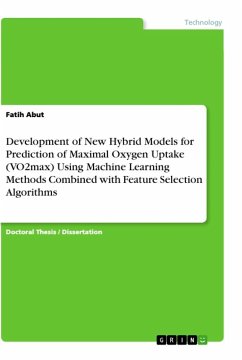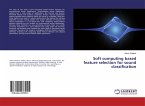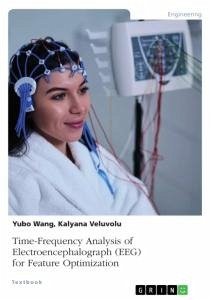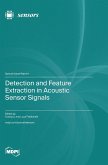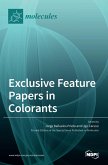Doctoral Thesis / Dissertation from the year 2017 in the subject Engineering - Computer Engineering, grade: 100.00/100.00, Çukurova University, language: English, abstract: The purpose of this thesis is twofold. The first purpose is to develop new hybrid feature selection-based maximal oxygen uptake (VO2max) prediction models using for the first time the double and triple combinations of maximal, submaximal and questionnaire variables. Several machine learning methods including Support Vector Machine, artificial neural network-based and tree-structured methods combined individually with three feature selectors Relief-F, minimum redundancy maximum relevance (mRMR) and maximum-likelihood feature selector (MLFS) have been applied for model development. The second purpose is to design a new ensemble feature selector, which aggregates the consensus properties of Relief-F, mRMR and MLFS to produce more robust decisions about the set of relevantly identified VO2max predictors and to create more accurate prediction models. Using 10-fold cross validation on three different datasets, the performance of prediction models has been evaluated by calculating their multiple correlation coefficients (R¿s) and root mean squared errors (RMSE¿s). The results show that compared with the results of the other regular feature selection-based models in literature, the reported values of R and RMSE of the hybrid models in this thesis are considerably more accurate. Furthermore, prediction models based on the proposed ensemble feature selector outperform the models created by individually using the Relief-F, mRMR or MLFS, achieving similar or ideally up to 12.46% lower error rates on the average.

